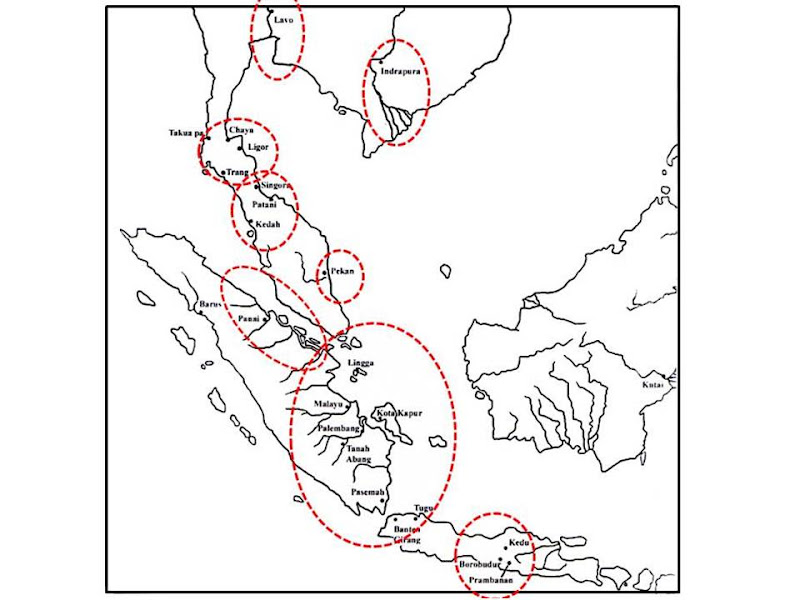
Austronesian migrations
Before the iron age, cutting down the thick jungle would have been an immensely hard task; the humid forest was also very difficult to burn. So they would have worked together in multi-family groups, and travelling up from the river estruaries, would have kept close to the river banks. The jungle and the river provided enough for their sustenance; ‘slash- and-burn’ shifting agriculture had to wait for the ‘parang’ or machete. The technology came from either Central Thailand or North Vietnam, probably by way of Austronesian cousins who settled in South Thailand since 1500BC.

Evolution of the axe and adze
Rice planting came with the introduction of more sophisticated metallic implements from the North, starting from about 300BC in Indonesia.
But the pre-eminent occupation for the early Malays was trade. And the Malay peninsula was located in a strategic position between China and the Spice Islands to the east and India, the Arab lands and Europe to the East. Regular trade contact with India started in the 1st millennium BC; Chinese records of South East Asian ports start from the 1st century AD. The naval Spice Route at that time competed successfully with the Silk Road.

But the source of the earliest Malay civilization did not spring from the peninsula but rather from across the Straits, from the island of Sumatra around the start of the 1st century AD. Palembang and Jambi were two settlements that came together and became the basis of Srivijaya. This was for most of the time a loose confederation of ‘kedatuans’, political entities based in the port-towns, that in addition to Palembang and Jambi in Sumatra, included outposts in Kedah and Langkasuka in the Malay peninsula, Kedu and Borodubor in Java, and Inderapura in present-day Cambodia.

Maximum extent of Srivijayan influence
Srivijaya was a maritime civilization, and its ports received traders from China, India and other parts of the world. The Indian connection was especially strong: Hindu and Buddist beliefs played a major role in the early Malay world. The oldest evidence of the Malay language comes to us in stone inscriptions written using an ancient Indian script. It is a mishmash of Sanskrit and quaint, but recognizable Malay.

Carving of Srivijayan vessel at Borodubor
References and Source of ImagesPaul Michel Munoz, "Early Kingdoms of the Indonesian Archipelago and the Malay Peninsula”, 2006Related Posts: | Subscribe to Tessellar Blog and get a FREE E-Book  HONEYCOMB HOUSING An Affordable Alternative to Terrace Housing 17MB, 49 A4 pages, 57 illustrations |
Technorati Tags:Srivijayan civilization,Malaysian History, Early Malay Civilisation
No comments:
Post a Comment